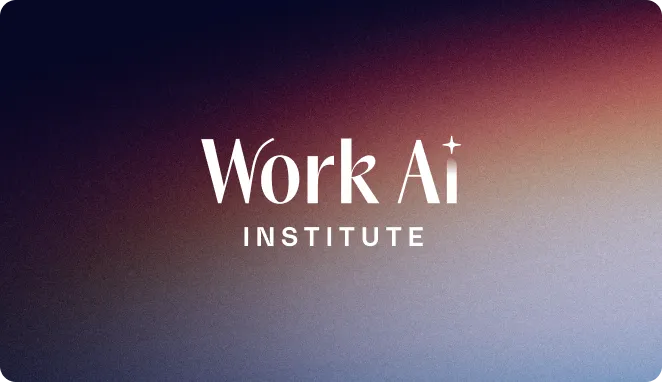- As customer expectations shift, financial services need to deliver personalized, seamless experiences to build trust and improve customer loyalty.
- AI-driven personalization enables the creation of 360-degree customer profiles, offering tailored and meaningful interactions instantly, leading to higher retention, loyalty, and revenue growth.
- Implementing AI in financial services also addresses operational efficiencies, competitive differentiation, and helps meet compliance and security challenges.
Financial services organizations are facing a significant challenge. As customer expectations evolve, they demand more personalized, responsive, and seamless experiences. However, delivering such experiences at scale has been difficult — until now. With the rapid development of AI, financial institutions now have the tools to transform how they engage with customers, driving loyalty and retention in ways that were previously unimaginable.
In this post, we’ll explore how AI-driven personalization is changing the game for banks, investment and wealth management firms, and other financial services organizations, helping build trust and improve customer loyalty, while also boosting revenue, operational efficiency, and competitive advantage.
Why financial institutions focus on personalization
Unlike other sectors, where loyalty may be driven by convenience or price, customers in financial services rely on their institutions to safeguard their most important assets — both personal and financial. With the rise of challenger banks and fintech disruptors, financial institutions across all vectors are under pressure to rethink how they maintain customer loyalty and trust.
Customer loyalty in financial services is no longer just about providing the basics. Customers want tailored solutions that meet their unique needs. Whether it's personalized financial advice, proactive service, or relevant product recommendations, they expect more. This shift creates an urgent need for financial institutions to leverage technology that enables a deeper understanding of their customers and delivers personalized experiences that inspire trust and loyalty.
How AI is delivering personalized experiences at scale
AI is the key to delivering personalized experiences at scale. By analyzing vast amounts of data — from transaction histories to customer behavior — AI allows financial services organizations to build 360-degree profiles of their customers. These profiles provide the insights needed to offer hyper-personalized interactions, whether it's recommending the right financial products or predicting a customer’s next need.
More importantly, AI eliminates the bottleneck of manual personalization. Traditional methods of personalizing customer interactions require time and effort, often leading to inconsistent service. AI, on the other hand, can process data in real-time, allowing companies to deliver tailored experiences instantaneously. This ability to respond quickly and accurately helps financial services firms build stronger, more trusting relationships with their customers.
For example, AI can enable a bank’s digital assistant to respond to a customer query in seconds, offering personalized solutions based on the customer’s financial goals. Whether it’s sending reminders about upcoming payments, suggesting savings plans, or providing updates on investment performance, AI makes these interactions more meaningful and relevant.
The impact of AI in financial services
AI-driven personalization isn’t just a luxury for financial services — it’s a strategic business move. Building stronger customer relationships through tailored, meaningful experiences leads directly to higher retention rates and greater customer engagement. When customers feel understood and valued, they are far more likely to stay loyal, recommend the service to others, and engage with the offerings provided.
But the benefits don’t stop at customer loyalty. Financial services organizations can realize significant business impact from AI-driven personalization, including:
- Revenue growth: Personalization leads to more cross-selling opportunities. When a financial institution understands a customer’s financial situation, it can recommend products that are more likely to meet their needs, driving higher sales and more meaningful customer relationships.
- Improved retention: Personalized interactions make customers feel valued. When customers receive relevant recommendations and proactive service, they’re less likely to switch providers, increasing retention rates and reducing churn.
- Increased operational efficiency: By automating routine customer interactions and providing personalized recommendations at scale, AI frees up human resources for higher-value tasks, improving overall efficiency.
- Competitive differentiation: Personalization is a key differentiator in a crowded market. Financial institutions that adopt AI to deliver personalized experiences will have a significant edge, gaining customer loyalty and trust while staying ahead of competitors.
How Glean is transforming financial institutions
Many leading financial institutions are already reaping the rewards of AI-driven personalization. Take Citi, for example. By leveraging AI, they’ve improved customer interactions through personalized financial insights and proactive service. This has not only improved customer satisfaction but also contributed to higher retention rates.
Here are a few examples of how Glean is helping transform the customer experience and drive business outcomes in financial services:
- Wealthsimple: Wealthsimple faced challenges with employees struggling to find the critical knowledge needed for their tasks. Glean helped by centralizing access to information from multiple tools like Google Docs, GitHub, Jira, and Slack. This centralization led to a 98% employee adoption rate and over $1 million in annual savings from the time saved on search and information retrieval.
- Super.com: As Super.com experienced rapid growth, they faced the challenge of managing a fragmented knowledge base, making it difficult for employees to quickly locate critical information. Glean helped unify their knowledge into a single, easily accessible hub, which led to a 17x return on investment. The solution saved over 1,500 hours monthly and improved onboarding speed by 20%, ultimately contributing to increased operational efficiency and better transparency across teams.
- Leading financial software provider: One anonymous financial software provider struggled with a fragmented knowledge base across more than 30 different software solutions. By implementing Glean, the company was able to save over 3,000 hours per month, unlocking $2.3 million in yearly value.
These real-world examples highlight how AI-driven personalization is already making a significant impact, providing a roadmap for other financial services organizations looking to implement similar strategies.
Overcoming compliance and security challenges in AI adoption
Of course, AI adoption comes with its own set of challenges — especially in an industry as regulated as financial services. Concerns around data security, privacy, and compliance are top of mind for many executives. But the right AI solutions can mitigate these risks, ensuring that personalization efforts remain secure and compliant.
The key is choosing an AI platform that is not only powerful but also secure. Look for solutions that integrate seamlessly with existing systems, ensuring that customer data is protected across every touchpoint. For instance, Glean’s AI-powered solutions offer robust security measures that adhere to industry standards like SOC 2 and GDPR, making it easier for organizations to maintain compliance while still reaping the benefits of AI-driven personalization.
Why financial institutions must embrace AI now
As financial services face growing competition and rising customer expectations, the ability to deliver personalized, seamless experiences at scale is a strategic necessity. AI-driven personalization enables financial institutions to build stronger customer relationships, driving both trust and loyalty. But the impact goes beyond customer satisfaction. By leveraging AI to understand and engage customers on a deeper level, financial services firms can unlock new revenue streams, improve retention rates, and streamline operations.
The question for executives isn’t whether AI should be part of their customer engagement strategy — it’s how quickly they can implement it to stay ahead of competitors and meet the evolving demands of their customers. By embracing AI now, financial institutions not only create lasting relationships with their customers but also position themselves for sustained growth and success in an increasingly digital world.
Download our whitepaper, How AI Powers Transformation Across Financial Services, to learn more!









